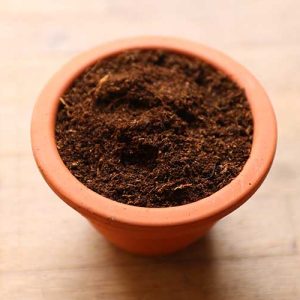HOW TO CARE FOR YOUR RHIPSALIS (MISTLETOE CACTUS)
THE RHIPSALIS PLANT
Rhipsalis AKA Mistletoe Cactus / Coral Cactus
The Rhipsalis is a bit of an enigma: it’s a cactus disguised as a hanging plant. A fast grower, that cascades from a pot in long, messy tendrils; this unusual houseplant is a real oddity – which is why we love it! Rhipsalis are forgiving plants, perfect for newbie plant-parents, and work brilliantly for brightening up your living space.

Where Does It Come From?
Native to Central and South America plus a few scattered locations in Southeast Asia and Africa, this family of epiphytic cacti includes over 60 different species, so there is a size, shape and style to suit everyone. It’s the only cactus to grow in the wild outside North and South America.
Why Should I Get One?
- Virtually maintenance free, another big plus of the species is that it doesn’t shed anything onto the floor. Perfect for an office space, or to brighten up a bookshelf, this plant brings a touch of tropical freshness without any of the cleaning hassle.
- Rhipsalis are also known to help purify the air.
How Big Can It Grow?
In the wild the wispy tendrils of the Rhipsalis can reach a whopping 20-feet long. In the home, these plants are relatively slow growers, but if in a hanging basket, or grown as a cascading pot-plant, and treated correctly, these plants can grow to basically as long as you’d like them to!
Where Should I Keep It?
Like most cacti and other epiphytic species, the Rhipsalis prefers bright, indirect light but can tolerate more powerful direct light for a few hours in the morning and evening. The best position for the plant is usually in a bright room, slightly removed from any windows that can magnify powerful sunshine. Overall however, the Rhipsalis isn’t fussy and can survive in medium and low light conditions for extended periods of time, as long as it’s given a sunshine top up every now and then! They appreciate warmth and humidity so bear this in mind when placing your rhipsalis.
How Often Should I Water It?
You’d think that being native to rainforests and growing in the trunks of jungle trees that the Rhipsalis would be used to plenty of water but that isn’t the case. The plant is still a cacti and reacts very poorly to being overwatered (in the wild, much of the water runs off the plants without ever sticking around too long on the roots). We recommend watering the plant sparingly once per week or whenever the soil feels dry. Make sure the pot is well-drained too as these plants are quite susceptible to root rot. Fertilising the plant with a specialist cactus fertiliser once per month during the spring and summer is also a good idea to ensure optimum growth and health.
Uber low-maintenance, forgiving and gorgeous, these tropical cacti are real crowd-pleasers. Offering a truly unique look within the wider ‘cacti’ family, there’s so many plus points that make investing in one of these bad boys worthwhile. Whether you want to improve the air quality within your home, improve your indoor gardening skills by nurturing a pretty houseplant that isn’t too demanding, or indeed cultivate a unique piece of jungle-style interior décor: the Rhipsalis is the one for you!
-
Quick View
 Sold OutSelect options This product has multiple variants. The options may be chosen on the product page quick view
Sold OutSelect options This product has multiple variants. The options may be chosen on the product page quick view -
Quick View
-
Quick View
Mini Prickly Pear Cactus (Opuntia)
View All, Mini Terrarium Plants, Cacti + Succulents, Baby House Plants £6.00 -
 Sold OutSelect options This product has multiple variants. The options may be chosen on the product page quick viewQuick View
Sold OutSelect options This product has multiple variants. The options may be chosen on the product page quick viewQuick ViewSoil for Cacti and Succulents
Soil, Grit + Gravel, Terrarium Moss, Decor + Tools, View All £3.00 – £3.50


